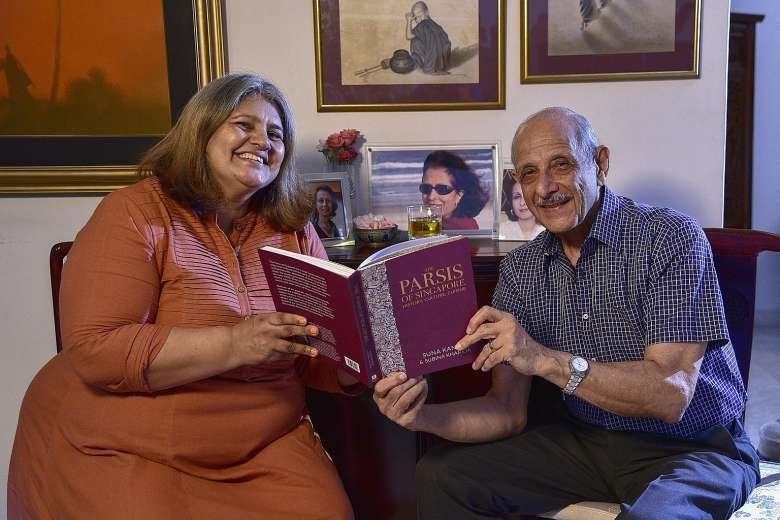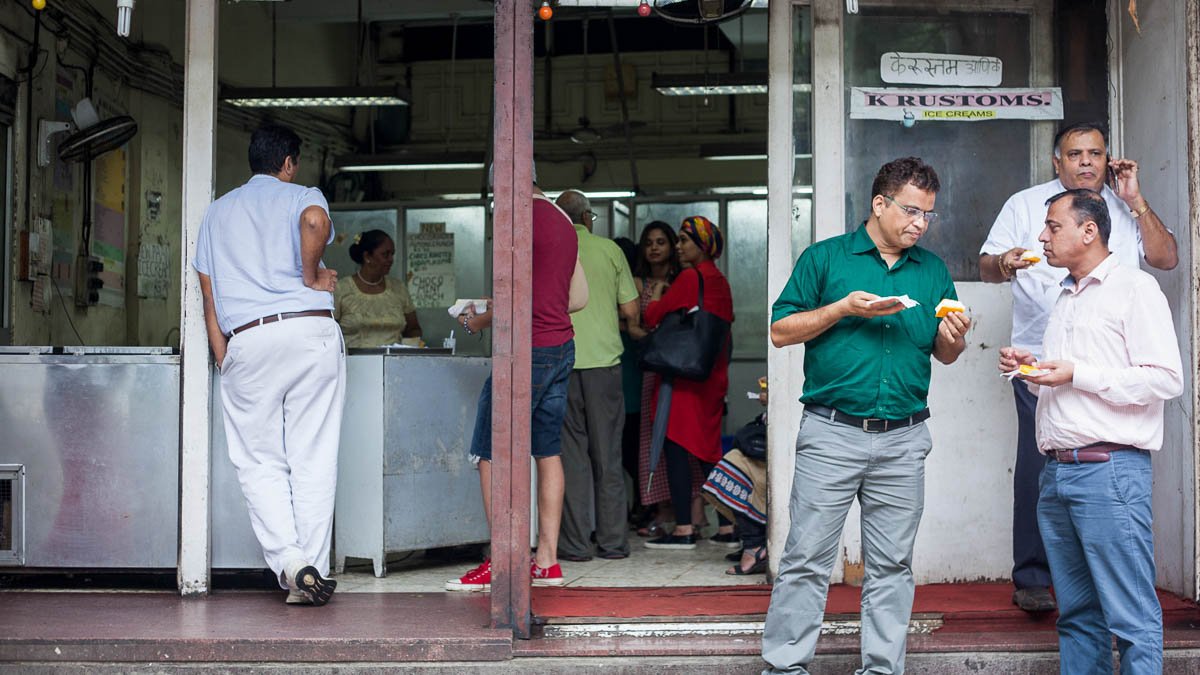THE QUEST IS ON TO SAVE A DYING ZOROASTRIAN LANGUAGE
The Zoroastrian population in Gujarat, India, is dwindling, but Russian academic Anton Zykov is making sure their distinctive tongue is not forgotten.
Growing up in Moscow, Anton Zykov was surrounded by “all things Indian.” Jawaharlal Nehru Square, where the statue of India’s first prime minister stands, was just around the corner from his home. His bookshelf was lined with children’s biographies of Indian rulers like Tipu Sultan and Hyder Ali. He learned to speak Hindi in school. With both his parents being doctors, he was quite sure one day he would grow up to be one too — a typically Indian thing, he admits.
While his calling in medicine never arrived, the Indian connection persisted. Today a scholar at the Oriental Studies School of Sorbonne University, Zykov, 31, is documenting the dynamism of Parsi-Gujarati — a language (some consider it a dialect) spoken by Parsis, a Zoroastrian community in India.
One of the world’s oldest religions, the monotheistic Zoroastrianism (named for the Persian prophet Zoroaster) probably influenced the development of Judaism, Christianity and Islam. Zoroastrians migrated to India between the eighth and 10th centuries A.D., fleeing persecution by the Arabs in Iran (then Persia). They found refuge off the coast of Gujarat, a northeastern state in India. While assimilating certain aspects of local culture, including their language with regionally spoken Gujarati, they retained their religious identity.
They flourished into one of the world’s most successful minority groups, with an intense focus on education that helped produce an incredible collection of billionaires and business titans in the Tata, Godrej, Poonawalla, Mistry and Wadia families. The late Queen frontman Freddie Mercury and classical music conductor Zubin Mehta also come from the group. “Parsis can’t become complacent because they don’t have a country of their own,” Houtoxi Contractor, head of the Zoroastrian Association of Pennsylvania, told United Press International.
Yet today the Parsis, as this group of Zoroastrians became known, are dwindling — because of intermarriage there are only 57,000 of them left in India — to the point where the government is offering financial incentives for them to have more children. Consequently, Parsi-Gujarati, or what Zykov simply refers to as Parsi, has become endangered.
“The Parsi language is an identity marker of the Parsi community, whereas standard Gujarati nowadays does not have a community connotation per se,” says Zykov, who has a master’s in modern South Asian studies from Oxford. “The two also have phonetic, syntactic, lexical and other differences between them.”
I NOTICED THAT THEY SPOKE MORE FREELY AND SWEAR MUCH MORE IN THE ABSENCE OF WOMEN.
ANTON ZYKOV
It wasn’t purely the love for linguistics that drew Zykov to undertake the preservation of Parsi-Gujrati for his Ph.D. Having studied the history of khandias or nasusalars (Parsi corpse-bearers) for his master’s, Zykov was keen on digging deeper. “Linguistics gives a better understanding of how ideas evolve and how you can trace perceptions,” says Zykov. “I wanted to use it to have a better understanding of the Zoroastrian notions of death.”
Since 2017, the documentation of Parsi-Gujarati has led Zykov to make over 200 recordings of it in colloquial speech, in a project funded by the Endangered Languages Documentation Program at SOAS University of London. Traveling through Gujarat (the major Parsi base) and neighboring Maharashtra state, he has spoken to a diverse group of Parsis belonging to a range of age groups, social classes, professions and regions so that he could capture the change in discourse and dialect of each context.
“Anton is the kind of person who will completely immerse himself in the subject he is pursuing,” says Rohin Kanga, a Parsi real estate developer who hosted Zykov during his research in India. “He has traveled to remote villages and even in areas of complete wilderness to meet two or three odd Parsis living there.”
That kind of immersion is necessary for Zykov to pull out the language’s complexity. He recalls joining a group of men on a trip to a pilgrimage site called Udvada. “I noticed that they spoke more freely and swear much more in the absence of women,” he chuckles. “It’s a bit like a trip to Las Vegas for them.”
Still, not all parts of Parsi life remained accessible to him. According to Zykov, 90 percent of agiyaris (fire temples) in India do not allow non-Parsis to enter. In such cases, Zykov trained consultants from the Parsi community to aid him in the documentation. “I acknowledge that with proper guidance, a Parsi could do this work better than I can,” confesses Zykov, who also began his fieldwork for the project with almost no knowledge of Gujarati. “But nobody else is doing it.”
Shernaz Cama, the director of Parzor, a nonprofit that works for the preservation of Parsi culture, feels that Zykov is “immensely qualified” for the documentation because he “has interacted with each [stratum] of Parsi society, right from the corpse-bearers to those above.”
While Zykov might have a meticulous approach to his work, Kanga describes him as a “mazedar admi” (fun-loving man), who never took offense to anything said to him during their time together and always had a “witty response” to situations.
Zykov admits presently he has little time for leisure, with one minute of the project’s video documentation taking almost 45 minutes of work. Although before falling asleep, Zykov finds some time for Netflix, his favorite shows being Delhi Crime, which follows an infamous gang rape, and Thackeray, a biopic of one of India’s most controversial and powerful politicians.
In his second and final phase of fieldwork, Zykov will visit cities like Jamshedpur, Kolkata, Chennai, Secunderabad and Bangalore to record Parsis outside of major population areas. Once completed (sometime next year), the documentation will be available to the public, mostly in the form of video clips with subtitles. “Right now, Parsi-Gujarati is only spoken at the grandparents’ generation. It doesn’t percolate further,” says Cama. “Unless the language is kept alive by people, it will die.”
Zykov hopes that his work will be used to teach Parsis their language in India and the diaspora that is scattered across Europe. But his work isn’t of value just to the Parsi community. “Parsi-Gujarati is an amalgamation of Persian and adivasi, or tribal, Gujarati. This gives the language both a sweetness and crudeness,” explains Cama. “Anton’s work will preserve a rich, intercultural dialect that has existed for over 1,000 years.”
Zykov has his favorite galliyans, or infamous cuss words, in Parsi-Gujarati. After a bit of thought, he agrees on sharing the least profane ones: bheju naa kha (don’t eat my brain) and photo frame thaiye gayu (referring to the death of a person by alluding to their photograph framed in remembrance). “But I prefer to fall in love with people and not language,” admits Zykov.
After completing his Ph.D., Zykov hopes to return to working with the nonprofit Doctors Without Borders, helping them gain access to patients in conflict zones. Though ask him the kind of people who interest him for his next study and he’ll find his way back to all things Indian and Persian: He wants to delve into the “Irani” Zoroastrians, who came to India in the 20th century.







